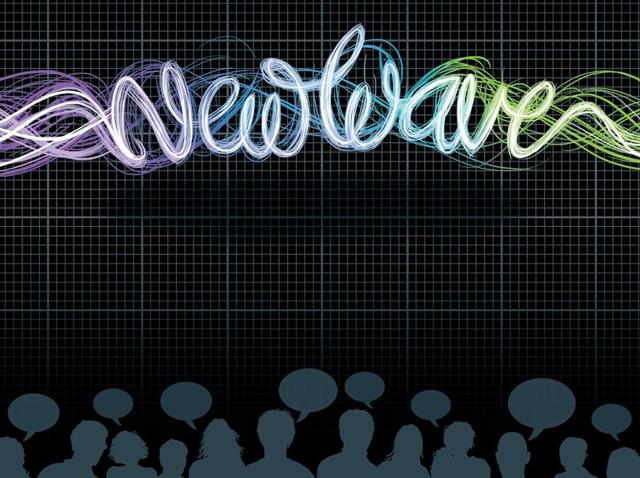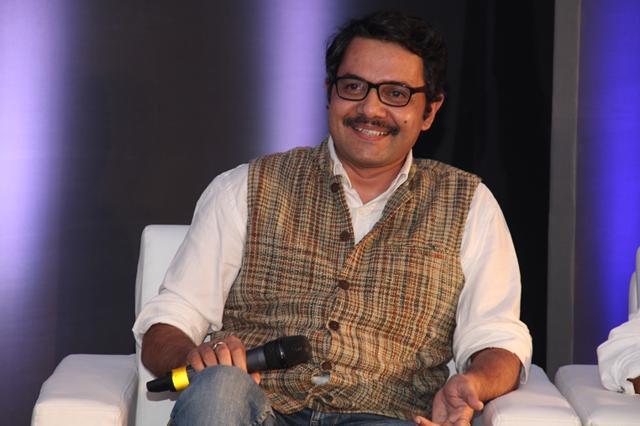Is the podcast the next big thing?
The West is hailing podcasts as the radio for the smartphone generation. With nine new podcasts set to launch here, can it be the game-changer in India?
In June 2005, Apple released one of the earliest versions of iTunes that supported podcasts. The term ‘podcast’ was largely unheard of, even in America. This version of iTunes made downloading and cataloguing them easy. But experiments with the podcast — a portmanteau of the words ‘(i)Pod’ and ‘broadcast’ — had already begun back in 2000, with shows like Daily Source Code by Adam Curry (a popular VJ on MTV in the US) and The Dawn and Drew Show (an eccentric couple’s spontaneous narration of their daily life).

However, its biggest push would come almost a decade later with Serial, an investigative podcast by journalist Sarah Koenig. While the medium was always bubbling under the surface, it had never managed to catch the attention of an entire nation before. Through 12 beautifully produced audio episodes, Koenig told the story of a high school murder. On January 13, 1999, Hae Min Lee, a student from Baltimore went missing after leaving her campus. Weeks later, when the police found her body in a seedy park, an ex-boyfriend Adnan Syed (an American born in a Pakistani immigrant family) was charged with first-degree murder. Since its release, Serial has managed to clock in over 200 million downloads (Koenig mentioned the figure during a recent lecture at University of Buffalo). Its impact was such that it reopened the case and gave Syed a fresh hearing in court.
Serial also managed to generate enough interest to garner sponsorships for its second season. Not only did the podcast become a weekly ritual for its listeners, but also the 20-second advert by MailChimp drew attention. This made advertisers sit up and take note of the power of the medium. Similarly, popular podcasts have started making money, through advertisements that are read out in the host’s signature style.





India’s very own Serial?
Could Trial by Error: The Aarushi Files — a soon-to-launch audio series — do the same for one of India’s most-talked-about cases? Scripted and narrated by Delhi-based journalist Nishita Jha, this eight-episode series will be part of music discovery app Saavn’s first slate of original programming that will go live on May 1. Nine other audio shows will go live too, including Cyrus Says by Cyrus Broacha, CricketWallah Chronicles by Ayaz Memon and Qisson ka Kona with Neelesh Misra. Taking a cue from Serial, Saavn too will introduce pre-roll ads. The opportunities are endless: advertiser-funded shows as seen on web series like Permanent Roommates, and embedded brand messaging.
Another platform, Gaana.com, is hosting stand-up comic Rajneesh Kapoor’s new podcast: Sit Down Comedy with Rajneesh Kapoor. It will introduce a new stand-up artist every 10 days. The first episode featured Varun Grover.

Digital first
But in an era of dwindling attention spans and ‘click-baits’, why should a long-form narrative medium without glitzy visuals be of any interest?“We are a headphone generation. We are multitasking at all times, whether it is reading a book, cooking a meal, or working out in the gym. Audio lends itself to many such moments that videos or visuals can’t,” says Rishi Malhotra, co-founder and CEO, Saavn.
Add to that another major factor: India’s growing mobile internet audience. India today has more than 225 million smartphone subscribers, and is poised to overtake the US as the second-largest smartphone market by next year. Thanks to affordable smartphones, our digital consumption is on the rise too. India’s internet population has grown from 100 million users in 2011 to 300 million in 2016 (according to a Ernst & Young report). And now, with the launch of 4G, the digital space is looking for new territories to annex.
“As India turns into a mobile-only audience, there is appetite for a different type of programming, be it audio or video,” says Malhotra. Modelled on similar services such as HBO on Demand, Netflix and Sirius Satellite Radio, those backing podcasts are looking to create original content for audio, the way Netflix did for TV, with shows like House of Cards and Jessica Jones.
Compared to TV, audio production is remarkably more cost-effective. That means one can take risks with the programming. For instance, for his show Cyrus Says, Broacha invites non-celebrities like singer-director Ankur Tewari or a budding comedian like Tushar Singh and gets them to talk about their lives. “It is an intimate medium. You can get people to say all kinds of things. It’s like being in a therapist’s chair,” says Broacha, who has done over 80 episodes in the last year.
Podcasts are yet to turn profitable for their makers. “No one is making money doing podcasts yet. It’s how the internet was when it started,” says Broacha. But those making podcasts say advertisers are willing to spend anywhere between Rs60,000 to Rs1 lakh per episode, which is far less compared to a prime spot on radio.
How India discovered podcasts
Popularity of radio talk shows and radio plays by NPR (USA) or BBC (UK) is one of the biggest reasons podcasts work well in Britain and America. However, in India, where radio is saturated with music-led content, the exposure to talking audio has been little. But, type ‘podcasts in India’ into Google, and two names sit at the top: Indicast and Audiomatic.
Started by two friends, Aditya Mhatre (34) and Abhishek Kumar (33), Indicast has been one of the oldest and longest-running podcasts in India. Every few weeks, the duo pick trending topics in current affairs and discuss it “like two friends over a cup of coffee”. “iTunes had just added podcast technology in 2005. That’s when Aditya, who was working in the US, told me about podcasts. We wanted to do a blog, but realised it would take a lot more effort. So we decided to do a podcast instead,” says Kumar. With over 200 episodes under its belt, Indicast gets about 30,000 downloads each episode.

Audiomatic — started a year ago — launched four podcasts on subjects ranging from science to food. Each episode now clocks in about 10,000 listeners on an average. The platform also ties up with websites like Scroll and Huffington Post India to leverage their reader base. One of its most popular podcasts, The Intersection (by journalists Padmaparna Ghosh and Samanth Subramanian) brings a fresh perspective to history and science every fortnight. On the other hand, The Real Food Podcast by Vikram Doctor, a food writer, looks at ingredients and legends behind food.
That’s got to be tricky, talking about food without showing it? “Anything that has a narrative works. One of my favourite podcast is called 99% Invisible, which is all about architecture and design. You’d think that you can’t do design on audio, but you have to listen to it to believe me,” says Rajesh Tahil of Audiomatic. The Real Food Podcast’s episode on Amul butter was downloaded 50,000 times, making it one of the most popular ones on the network.
Road ahead
Audio as a medium can be both liberating and restricting. One of the advantages is that it is open to imagination, like a book. But the medium’s biggest limitation is that once a listener engages with it, he wants to see it. “That’s pretty much the path we will be taking soon. Based on how our audio products work, we will move into video products in original programming,” says Gaurav Wadhwa, vice president, entertainment and original content, Saavn.
But that’s hardly a vote of confidence for the audio medium. Despite being in existence for about a decade internationally, debates on whether podcast is the next big thing can still be heard. “According to me, in all these years, it [podcast] really hasn’t gone anywhere. But one of the reasons it hasn’t taken off so far is because the content isn’t great,” says Kumar of Indicast.
However, companies like Gaana.com and Saavn seem bullish on the medium. “Audio can be the medium for everything — music, entertainment, education, audio books. These patterns are seen worldwide. But what makes India unique is that everybody has mobiles and headphones on them,” says Malhotra.
5 Indian podcasts you need to know





Catch your daily dose of Fashion, Health, Festivals, Travel, Relationship, Recipe and all the other Latest Lifestyle News on Hindustan Times Website and APPs.




